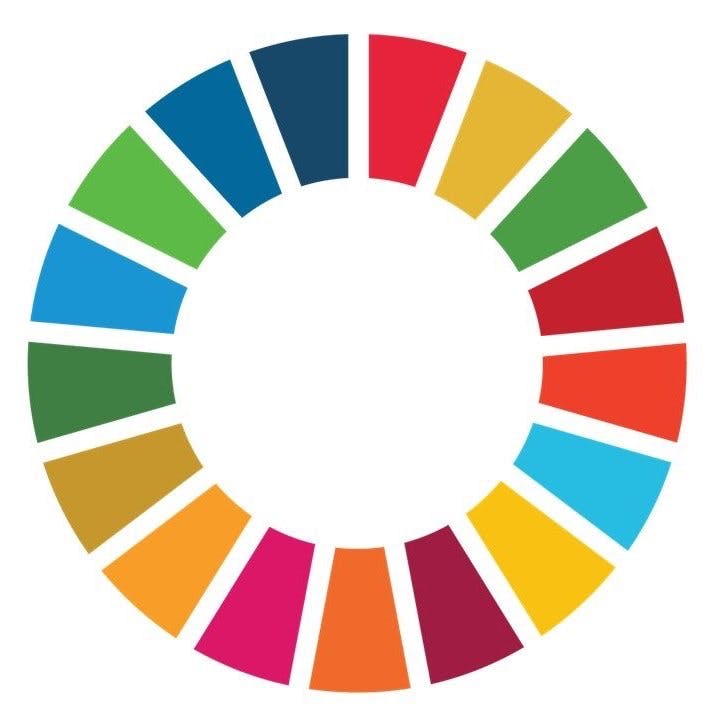World leaders have promised to end poverty, reduce inequalities, and tackle climate change by 2030 as part of the Sustainable Development Goals (SDGs). Now that we’re three years into the SDGs, how are we doing?
The new Sustainable Development Goals Report from the UN provides reasons for concern, but also hope. Most of all, it provides reasons for all of us to step up our efforts to achieve the SDGs.
The report was released ahead of next month’s High-level Political Forum on Sustainable Development(HLPF), the annual progress moment for the SDGs. It harnesses the latest data on development trends and provides a snapshot of where the world is against the global goals.
Overall, the report shows that important progress is being made in improving lives: declines in extreme poverty and child deaths, greater access to education, jobs, and sustainable energy, and growth in sustainable consumption and production policies. At the same time, increases in global hunger, rising levels of conflict and displacement, record-breaking extreme weather, and persistent inequalities are preventing, and in some cases, undoing progress.
In short, we are making progress in areas where there is strong international action, but to meet the SDGs by 2030, we must raise our ambitions.
Here are seven reasons we need to step up action on the SDGs:
- While extreme poverty has been reduced considerably in the past decades, there are pockets in the world where it still stubbornly persists.
Extreme poverty in 2013 was a third of the 1990 value – declining to only 11% of the world’s population. Despite this improvement, 783 million people still live on less than $1.90 a day. Morethan half of the world’s extreme poor live in sub-Saharan Africa, while about one-third live in Southern Asia.
- Worldwide, child mortality decreased substantially over the past several decades.
Child deaths fell by 47 percent from 2000 to 2016, which means more children are living and thriving. Still, the fact that 5.6 million children die each year – mostly of preventable causes – shows we have more work to do. This is especially true when it comes to neonatal deaths, which have seen less progress.
- Child marriage has continued to decline around the world.
Gender inequality continues to threaten girls and women around the world. Women continue to be underrepresented in the workforce and in political capitals, but one important area of improvement is fewer girls are being married as child brides. This progress has largely been driven by the progress in Southern Asia, where a girl’s risk of marrying in childhood has declined by over 40% since around 2000. Still, one girl married as a child is one too many.
- Ensuring access to affordable, reliable, and modern energy for all is one step closer.
From 2000 to 2016, the proportion of the global population with access to electricity increased from 78% to 87%, with the absolute number of people living without access to electricity dipping to just below 1 billion. The challenge of 3 billion people cooking with polluting fuels and stoves is especially severe, causing 4 million deaths a year. Closing the gaps in access to sustainable energy is essential to sustainable development – protecting health and the environment while opening up education and economic opportunities.
- Despite efforts to reduce the risks from disasters, economic losses in 2017 attributed to disasters were estimated at over $300 billion.
These are among the highest losses in past years owing to three major hurricanes affecting the U.S. and the Caribbean. Climate change is contributing to more intense extreme weather, and unfortunately the world’s poorest people are the most vulnerable to disasters.
- Global hunger is on the rise after a period of prolonged decline.
Until recently, global hunger was decreasing. Unfortunately, that trend has reversed as the number of undernourished people rose to 815 million in 2016. Conflict, drought, and disasters linked to climate change are among the factors causing reversal in the long-term progress in fighting global hunger.
- Urgent action on climate change is imperative, as 2017 was one of the three warmest years on record.
The well-being of people is connected to the well-being of the planet. Last year’s temperature was 1.1 above pre-historical levels and one of recorded history’s hottest years. In fact, the 2013-2017 five-year average global temperature is the highest on record. Rising sea levels, the most expensive hurricane season on record, and increasing concentrations of greenhouse gases demand accelerated action on the Paris Agreement on climate change, which has been ratified by 175 countries. Around the world, local governments and ordinary people are taking bold actions to fight climate change. We need more of it.
These seven reasons are far from a comprehensive overview of SDG progress, but give a snapshot of the urgent challenges in front of us and make a strong case for why we need to address our connected social, economic, and environmental challenges – at the same time.
While the challenges ahead are difficult, they are not insurmountable. We’ve seen time and again that when the international community mobilizes, change happens. By finding new ways to partner on and finance the SDGs, increase resources and political commitment, and focus our efforts on the most vulnerable, we can go further and faster on the SDGs. As Secretary-General António Guterres notes:
“With just 12 years left to the 2030 deadline, we must inject a sense of urgency. Achieving the 2030 Agenda requires immediate and accelerated actions by countries along with collaborative partnerships among governments and stakeholders at all levels.”
We can reach the SDGs and make sure no one is left behind, but we need to do more – and we need to do it now.
Read the entire SDG 2018 report here, and follow @unfoundation to join the discussions at July’s High-level Political Forum on how we can accelerate progress. You can learn more about what to expect here.

